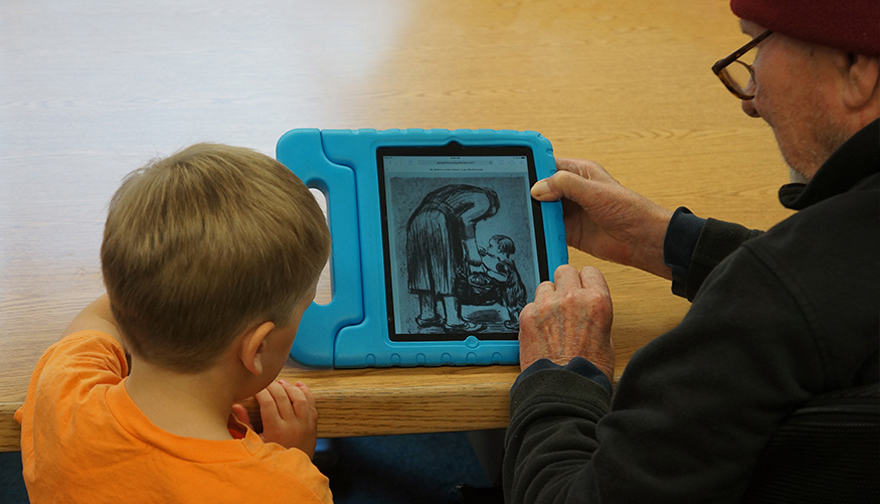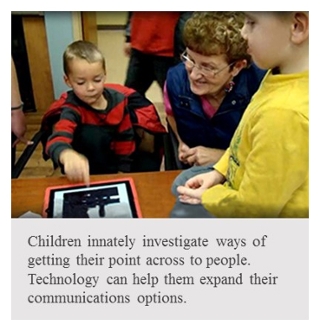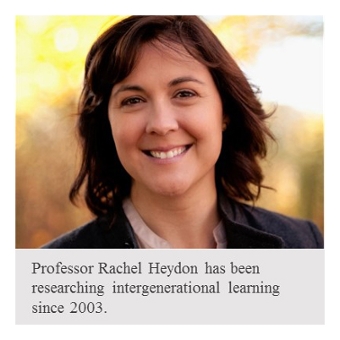
Toddlers and seniors connect in a variety of ways using technology as part of a Western Education study at Seattle's Providence Mount Saint Vincent seniors home.

Toddlers and seniors connect in a variety of ways using technology as part of a Western Education study at Seattle's Providence Mount Saint Vincent seniors home.
It is well understood that technology can have positive impacts on both children and the elderly.
Kids can use it to learn new skills in interactive and exciting ways. Seniors can use it to stay connected, and reduce feelings of isolation and loneliness. But can it help these two separate groups connect in a meaningful way? Western Education professor Rachel Heydon is about to find out.
Heydon, a professor of curriculum studies, is currently in the first year of a five-year research project to develop curriculum for intergenerational learning programs that leverages the use of digital tools.
These programs involve both children and senior citizens, and comprise curriculum and activities that provide learning opportunities to help bring together individuals separated by an entire generation.
“Intergenerational learning recognizes the importance of both groups. Children can learn a great deal from elders, and vice versa,” said Heydon. “We’re adding technology to the programing to see if it can help develop a curriculum that creates more opportunities to learn together, and to develop even stronger relationships between the generations.”

Heydon is currently working with the Intergenerational Learning Centre in Seattle’s Providence Mount Saint Vincent seniors home. The unique program has seniors and children sharing the same physical space, and programming.
By utilizing the digital technology, in this case iPads, she is hoping to help develop curriculum that expands children and seniors’ options for communication, and helps them to better understand their own identities and how they see themselves in relation to others.
“Children, for example, are often positioned as people who need to become adults to become better at things,” said Heydon. “But they often have a greater knowledge of digital tools that they can pass along, so the message they get from these interactions is ‘you’re a capable communicator with something to teach other people.’”
Heydon has been researching intergenerational learning since 2003. Her most recent study is funded by Canada’s Social Sciences and Humanities Research Council (SSHRC), and will see her travel to several intergenerational programs across Canada and the U.S. to continue her work.
Young children in these types of programs are very similar to their senior citizen companions, says Heydon. Both groups are in a new residence away from home, sometimes for the first time. Both are missing their house, their pets and their loved ones. Digital tools can help them to better connect over these powerful, shared experiences.
“They create art with the iPads and build portfolios of images together to show family members, friends and the people outside of the program environment,” said Heydon. “These digital resources help them to become more powerful communicators, and you can see the immense pride on their faces when they look back together on what they’ve created.”

The time spent interacting with the children in a give-and-take exchange of learning and ideas also helps the elder generation achieve a sense of generativity – an improvement in their own wellbeing that comes from being able to pass on their knowledge to a younger generation.
“We see their mood improve with the understanding that as they transition out of this life, something of what they knew will be able to live on. It’s absolutely tremendous.”
And while Heydon is working to develop better curriculum for intergenerational learning, she is also hoping her work will be applicable to monogenerational – or traditional – learning environments as well.
“We’re learning about these situations, about what makes the interactions with not only each other, but the technology itself such a powerful environment for learning literacy,” she said. “We’re discovering more about how children learn to read and write. Can it be applied elsewhere? Absolutely. The possibilities are endless.”